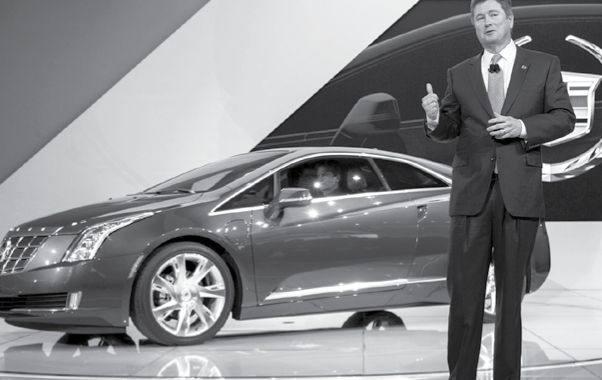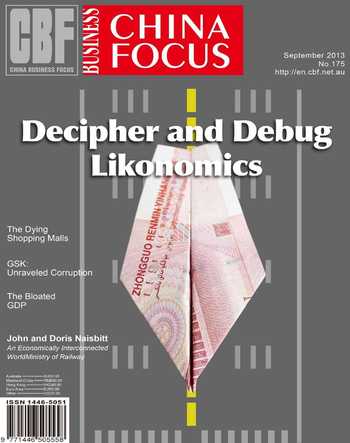GM Turns to Localization for Better Cadillac
The underperformance of Cadillac in China is always a headache for Shanghai GM, a branch of General Motors in Shanghai. On June 19, Dan Akerson, CEO of GM, arrived in Shanghai to take part in the cornerstone laying ceremony for Shanghai GMs Cadillac factory and Pan-Asia Automobile Technology Center.
During the process, Dan Akerson talked with Ye Yongming, General Manager of Shanghai GM, about the performance of Cadillac in China.
In the talk Akerson expressed his expectation that the sale of Cadillac would reach 100 thousand units in 2015, and that Cadillac will take 10% of the luxury car market in China by 2020. Based on the judgment of GM for the luxury auto market in China, there will be 3 million units sold by then. That means Cadillac needs to sell 300 thousand cars per year by 2020.
This sounds like a crazy idea. In the first five months of this year, Cadillac sold 15 thousand cars in China, the highest ever Cadillac made in the first five months of any year since its entry into China. The status quo is far away from Akersons expectation.
The U.S. luxury car brand has never got the pulse of luxury auto market in China, even though it began to introduce every new car into China eight years ago. When Mercedes Benz, BMW and Land Rover are busy battling Audi in the Chinese market, Cadillac could do nothing but watch the increasingly intense battle that has nothing to do with it.
This is not what Akerson wants to see. How to turn around the situation of Cadillac in China has become the biggest problem for Ye Yongming, who rarely met challenges as the CEO of Shanghai GM.
Problems from American Features
Presently, Cadillac is among the tertiary camp in the Chinese luxury auto market, far from the original goal when it made a full entry into China. Even Mercedes Benz, which was frequently reported with quality problems in 2012, sold 200 thousand units, while Cadillac could only sell 30 thousand units or so.
“Compared with Audi, BMW and Mercedes Benz, the biggest problem for Cadillac is with its products,” said Mei Songling, general manager of JDPower China. 80% of the three German cars have the 2.0T displace. For Cadillac, only two cars have the same displacement while the others are all equipped with engines whose displacement is larger than 3.0L.
“Though Chinese consumers think highly of the driving experiences and internal design of Cadillac, its appearance is still hard to be accepted by them, because they think they do not look like luxury cars,” a dealer of Cadillac said.
The most popular luxury cars in China look gracious and streamlined, but Cadillac is like carving out of a stone. The exaggerated outlook brings tension to consumers and does not match Chinese peoples sense of beauty. In addition, these cars look big from the appearance, but their internal space is not that grand, falling short of Chinese consumers love for the wide internal space.
GM, which went through restructurings after bankruptcy, has not much money to spare for the technological development. Therefore, Cadillac is not equipped with any market-leading care auto technologies. It even uses “hightech” seats as its selling point even though it is the basic equipment for every luxury car.
In 2012, Cadillac launched its knockout products STS, CTS, SLS, SRX and so on, 90% of the sold Cadillac were actually SRX, which is an SUV. This means Cadillacs brand structure and product portfolio in China are facing systematic challenges.
The straight lines and the lamps in the shape of vertically-cut diamond are the landmark features of Cadillac, representing the radical culture of the United States. It once used the daring slogan“Pioneering the World”, which matched Americans dream and fit consumers as strong as Arnold Schwarzenegger.
But these are the traits of Americans, which are completely out of style in China. It is just like most Chinese people will lose his/her appetite in front of a super hamburger or a beefsteak that is 20 centimeters thick.
How to Get Rid of American Traits
When it initially entered the Chinese market, Cadillac used to be a popu- lar choice for Chinese rich men who are known for “unusual personalities but low cultural contents”. But these traits have become the biggest hindrance for Cadillac to modify its image in the future.
Shanghai GM is considered king of marketing in the Chinese market, but most of its marketing efforts are used in Buick and Chevrolet. Since Cadillac cannot match Benz, Audi and BMW in sales volume, the marketing fees that are spent on Cadillac are very small too. Shanghai GM could not find a proper positioning for the marketing of Cadillac.
“Shanghai GMs strong marketing ability could only assist in the sale of low- and middle-end brands, but does not work with luxury cars. Thats because the marketing could only play a minor role in the sale of luxury cars while the brand image plays a more important role,” said a car expert. And thats what Cadillac is not good at.
Successful luxury brands must have their own brand contents and culture. Cadillac once wanted to enhance its American culture. One of its efforts was shown in its support for the film. CTS once had a wonderful performance in Matrix. The cooperation with Hollywood stars like Brad Pitt continues the legendary stories of Cadillac to improve its American-style fashion and compassion.
But such a style does not win the favor of Chinese rich men, who do not like the innovative and refreshing things. Cadillac is quite individualized but very few consumers can buy for this gene.
From “Pioneering the World” to“Faith, Creation and Possession”, from sponsoring Hollywood movie to Chinese movie, from supporting the film to the Boao Asian Forum… Shanghai GM keeps changing its marketing strategies and tries to turn Cadillac back to the major consumer groups.
Compromise in Development
These problems haunt Ye Yongming who scratches his head to bring success to Cadillac. It is necessary to make the localization and repositioning, instead of introducing the products.
Fortunately, GM headquarters has met halfway in the matter of localization in China. Last October, GM appointed its first “Cadillac Global Vice President”Bob Ferguson. He not only wants to introduce more cars into China, but also promotes the localized design in China.
After the establishment of Cadillac factory, Ye Yongming promised to introduce at least one new model per year into China for localization in the following five years, in order to gradually build a new product matrix consisting of luxury sports cars, sedans and SUVs.
This is a hard process. Shanghai GM has already missed the best opportunity to develop Cadillac in the past eight years. From last year, the storm of lowering price began to sweep the entire luxury car market. Cadillacs rivals usually lowered the price by 10%, and the mainstream luxury brands saw the prices of their products drop dramatically, or launch less luxurious cars, to improve their charm for ordinary people.
In order to compete with those cunning and resourceful competitors, Cadillac needs to be more visionary and practical.
In July, Shanghai GM launched the campaign of recruiting warriors for the“No. 66 road in the heart”. The “No. 66 road” is always a protagonist in Cadillacs promotional campaign in the United States. Now it found a similar role in China. Being encouraging and reminiscent, this does not match the superiority feeling inborn with luxury cars. However, it carried another signal: after localization, Cadillac will be smaller and more practical for Chinese people.
Only the success of Malibu can prove the success of Chevrolet. Similarly, only the success of Cadillac can prove Shanghai GMs marketing power and success.

